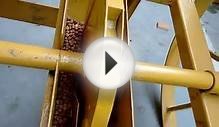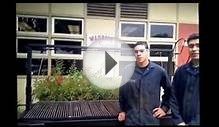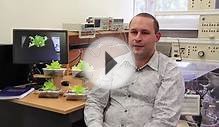
Sensing Technologies For Precision Agriculture In Florida
Investigators: Lee, W. S.; Ehsani, M. R.; Burks, T. F.; Schueller, J. K.
It is well known that agricultural fields are not uniform, but rather show in-field spatial variabillity in many important factors for crop production, such as nutrients, water, pH, soil type, soil water content, organic matter content, etc. Traditionally growers were aware of these in-field spatial variabilities, however no technologies were available to deal with them. They treated the whole field uniformly when they applied nutrients, water, pesticides, etc., regardless of the variability. However, with the advances of technology, site-specific crop management (SSCM) or precision agriculture is becoming possible, and different locations in a field can be treated differently based on the site-specific conditions. Precision agriculture is defined as "managing each crop production input - fertilizer, limestone, herbicide, insecticide, seed, etc. - on a site-specific basis to reduce waste, increase profits, and maintain the quality of the environment" (Ess and Morgan, 2003). To implement precision agriculture for efficient crop management, growers need to know the status of crop and soil throughout the crop production periods from planting to harvesting. Once the crop status is known, growers can make correct management decisions, so that they can save time, labor, and money and thereby increase yield and profit. However, currently there are not many sensing systems commercially available for detecting crop status. Those existing ones are mostly for grain crops and tailored for grain production, and cannot be easily applied to crops grown in Florida. In 2007, Florida's major crops were oranges, grapefruit, snap beans, tangerines, sugarcane, fresh market tomatoes, bell peppers, cucumbers, and watermelons in terms of total value of production (Florida Department of Agriculture and Consumer Services, 2008). Certainly Florida has its uniqueness in crop varieties, and thus different sensing systems need to be developed to fit the crop situations in Florida. During the next five years, we are planning to develop different sensing systems that could help site-specific crop management for Florida's major crops, including citrus, sugarcane, and other high value crops. The sensor systems will have to be very user-friendly, so that growers could utilize them easily without much prior training or experience. These sensing tehnologies will be transferred and disseminated to Florida growers, and we would like to encourage them to adopt these developed technologies in their crop production so that they could implement precision agriculture, maintain competitiveness, overcome potential farm labor shortage, and increase overall yield and profit, while maintaining the quality of the environment.
RELATED VIDEO












